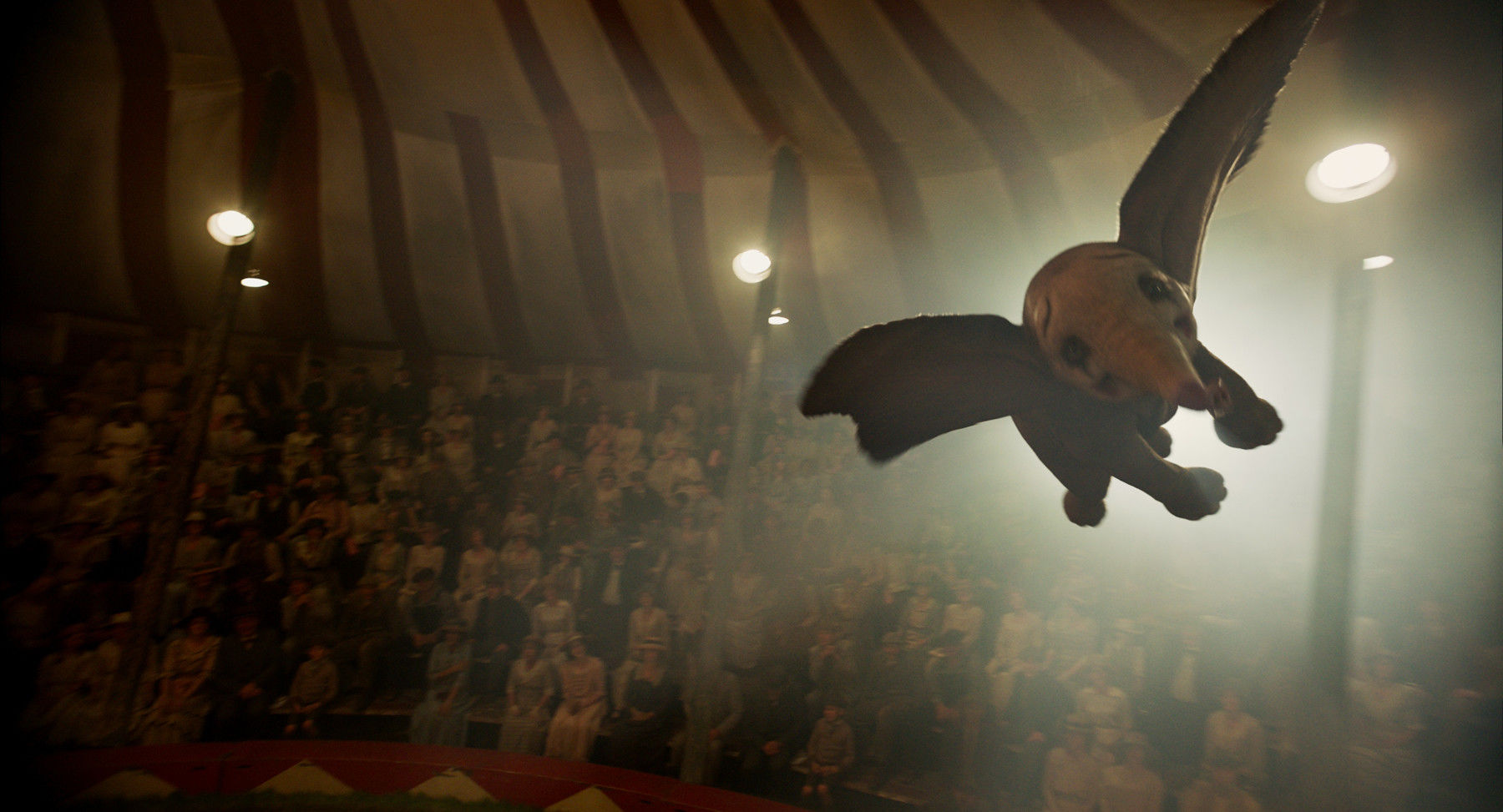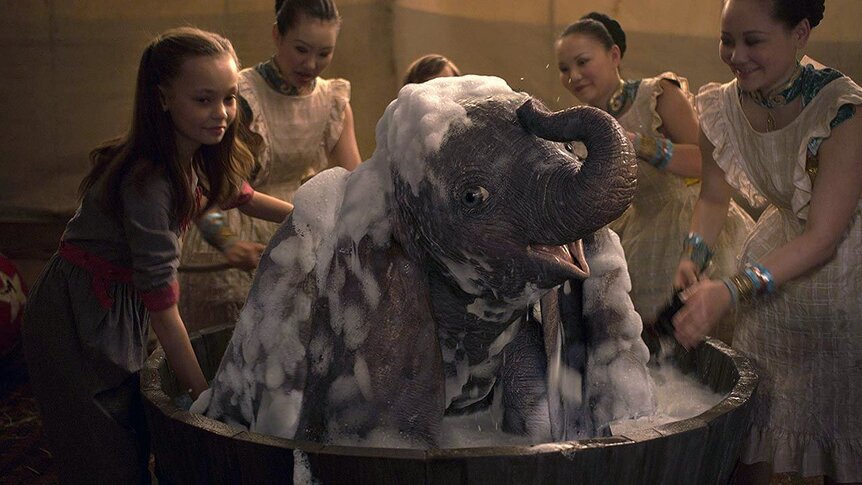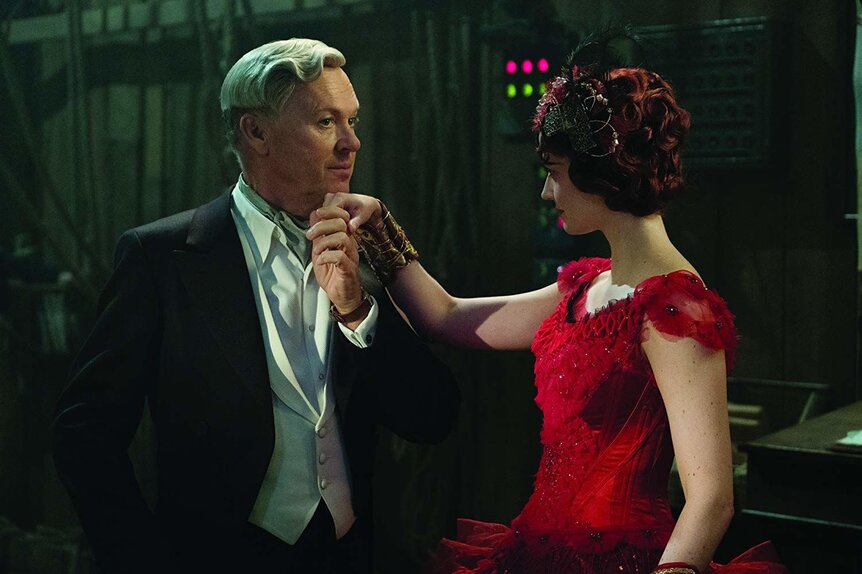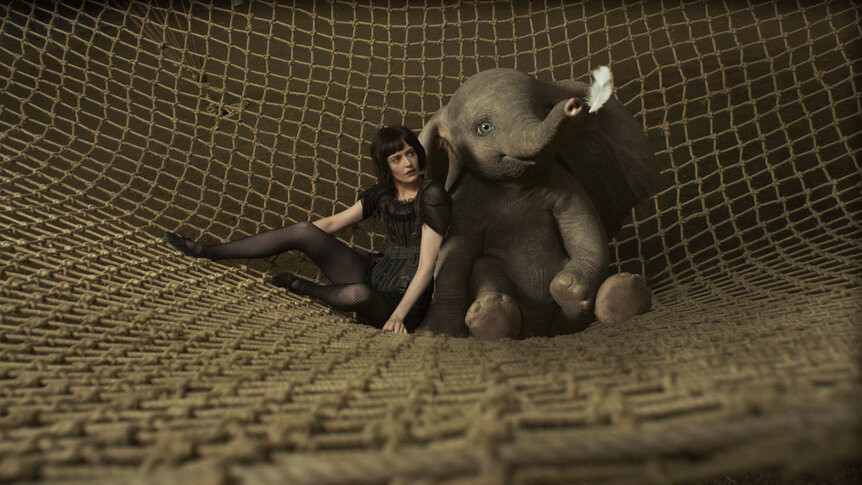Create a free profile to get unlimited access to exclusive videos, sweepstakes, and more!
Why the new Dumbo is at war with history (and that's not a bad thing)

SPOILERS for Dumbo herein ...
It’s easy to look back at the past of the Walt Disney Company with rose-colored glasses. Think of some of the earliest animated films from the studio, those released when Walt Disney himself was alive: Snow White and the Seven Dwarfs, Pinocchio, Bambi, Fantasia, and Dumbo were the studio’s first five, and are still among the most impressive the studio has released over more than 80 years.
Considering the foothold these films still have in popular culture, it’s easy to presume that they were all massive hits upon their initial release, but that presumption is wrong. In fact, the original Dumbo wound up being an extremely low-budget affair precisely because of the box-office stumbles of classic films such as Pinocchio.
Thinking about how low the budget for Dumbo was is fascinating to consider in relation to the live-action/CG remake directed by Tim Burton and opening this weekend. Though the budget for Burton’s remake has not been officially announced, it’s likely more than $100 million based in no small part on both the number of visual effects coupled with the big cast the film boasts. The days of Disney making films with low budgets — the reported budget for the original Dumbo was $950,000, which is the equivalent of just over $17 million in 2019 dollars — is long gone. But those kinds of constraints can sometimes fuel creative solutions rather than hamper them.
Perhaps the most interesting element of the new Dumbo is that this battle, between low budgets and high budgets, is presented starkly within the film itself. (Unfortunately, the flying elephant nicknamed Dumbo is used as a prop in the whole thing.)
When Dumbo (2019) opens, we’re at the traveling Medici Brothers Circus, overseen by Max Medici (Danny DeVito), who’s desperate to make ends meet and doesn’t realize how lucky he is when the Asian elephant he just purchased gives birth to a baby with extremely large ears that give it the gift of flight. (You might wonder why a circus ringmaster wouldn’t think an elephant that can fly is the best thing you could ever have in a circus. You would be right to wonder.)
But once Dumbo takes flight, he becomes a such a sensation that when V.A. Vandevere (Michael Keaton), who runs a major amusement park in New York, gets wind of the impossible elephant, he wants to make him a marquee attraction at his own park.
Once Max accepts a deal for V.A. to buy his entire circus, they all travel to the theme park called Dreamland, which feels like the 1920s-era version of Jurassic Park and for which its owner has spared no expense to thrill audiences of all ages. (Though much of Dreamland seems to deliberately recall the Disney theme parks, it’s based on a real amusement park from Coney Island in the early 1900s.) On the surface, what Vandevere is offering Max and the rest of his circus troupe is more than they could ever dream of. Dreamland seems to live up to the showman’s mantra: Making the impossible possible. The technology on display is genuinely futuristic, from what would have been prototypical Audio-Animatronics to high-rise roller-coasters.
But thanks in no small part to Keaton’s outsized, gleefully over-the-top performance, it’s easy to realize that Vandevere is a greed-obsessed villain who only wants Dumbo for his own avarice. Eventually, Max and his troupe rebel against the cruel Vandevere, helping to free both Dumbo and his mother so they can travel to their home continent of Africa. In the end, Max starts up another traveling circus, one that is both decidedly and proudly low-rent. While Dumbo and his mom are happy in the middle of the African veldt, Max and his circus pals are happy back on the road, giving people a more hand-made style of entertainment, from acrobatics to feats of derring-do.
This dichotomy is arguably extratextual, and not entirely successful because it comes in the form of a high-budget remake of an animated film that was almost entirely free of human characters. (The lack of human characters in the original Dumbo is in no small part due to the aforementioned small budget.) Only the recent Pete’s Dragon and Christopher Robin were Disney live-action revivals that weren’t given massive, blockbuster-style budgets, and only the former of those was an all-around solid film.
Many, though not all, of the recent Disney remakes are inspired by films with low budgets, from the original Cinderella to Alice in Wonderland. Disney animators of the 1940s and '50s did not have carte blanche the way filmmakers like Burton, Kenneth Branagh, and Jon Favreau likely have had. But being forced within a tight budget still allowed them to come up with genuinely magical characters, scenes, and worlds.
Movies like Dumbo are tasked with an impossible challenge of their own: recreating magic instead of getting to create something entirely new. It’s to Burton’s credit that his take on Dumbo feels a lot more invested than the nightmare known as Alice in Wonderland. Burton and Keaton, at least, are both having a wild time while also cashing a paycheck, though that doesn’t make Dumbo (2019) a film that can stand apart from its source material. But inside this remake is the very depiction of the struggle of making a high-budget remake of a low-budget film that managed to feel free and daring in ways that a film with money dripping out of its ears can’t hope to replicate.





























